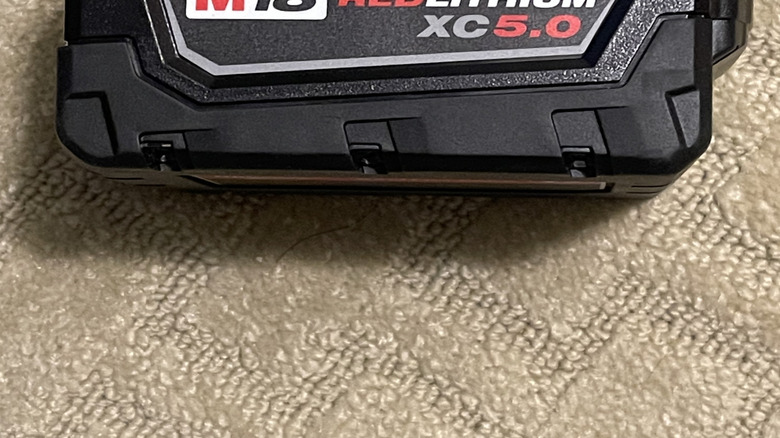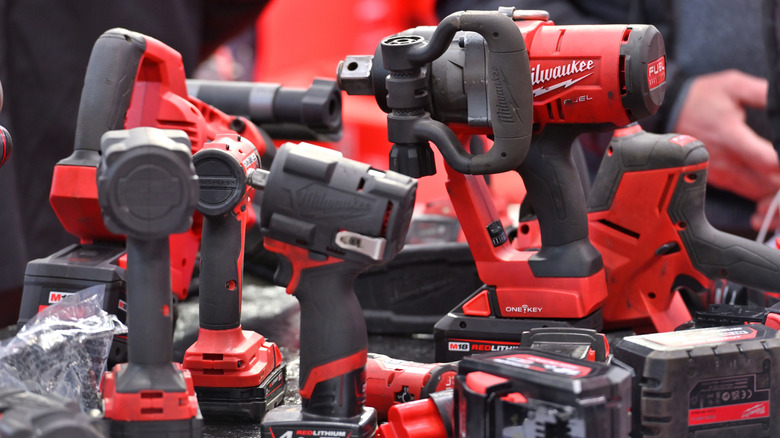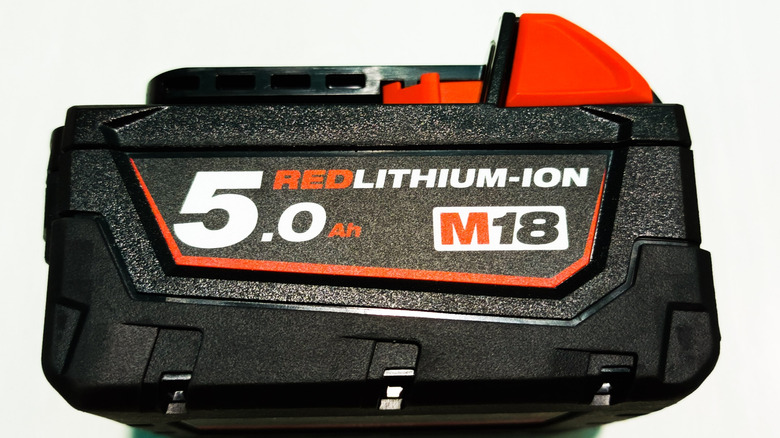What's The Average Lifespan Of A Milwaukee Battery, And Are There Ways To Extend It?
If you're looking for some power tools, or even a hand tool for that matter, you can never go wrong with Milwaukee. Since the 1920s, DIYers and professionals alike have relied on this brand for high-quality tools for nearly every job in metalwork, woodwork, and more. Over the past decade, Milwaukee has built its name on offering durable and reliable tools. Lately, however, much of that reputation has come down to Milwaukee batteries that power its lines of cordless systems, the M12 and the M18.
Generally, Milwaukee batteries are well-known for offering extended runtime, superior performance, and enhanced durability. But just like any other rechargeable power source, they're not built to last. In fact, on average, you should expect Milwaukee batteries to deliver a reliable service life of about three to five years (or 1000 charge cycles).
But that's not to say that you should expect all Milwaukee batteries to age the same way. While some users might report several years of reliable service, others might experience reduced performance much sooner. This will likely happen if you're used to making one or a few common mistakes that can ruin your power tool batteries, such as fully discharging your Milwaukee battery, leaving it to charge overnight, and storing your pack near a heat source.
Factors affecting Milwaukee batteries' lifespan
Just like Ryobi and Craftsman batteries, Milwaukee batteries are built with lithium-ion technology to offer durability, high performance, and even extended runtime for their cordless tools. However, this convenience also comes with a drawback: lithium-ion packs often degrade depending on how they are used daily.
One thing that really matters when it comes to lithium-ion batteries is the number of charge cycles. Every time you recharge and discharge your pack fully, that cycle puts a strain on the cells inside the battery. This means that after repeated charging cycles (say, over hundreds of cycles), the cells will gradually lose their efficiency, reducing your power tool batteries' lifespan. That's why you will notice that the batteries in your heavily used cordless drill will wear out faster than those used occasionally for DIY projects.
The environment in which you store your power tool batteries also plays a crucial role. Extreme heat or cold is tough on lithium-ion batteries. That's why it's always crucial that you avoid storing your tool batteries in a hot car or garage. Besides that, charging your battery immediately after finishing a drilling project will also stress the cells, diminishing their ability to hold a charge over time.
Signs your Milwaukee battery is failing (and how to extend its life)
If you've ever had a failing power tool battery, you know it can be a real struggle. That's why it's crucial to know the warning signs that your battery is on its last leg. Reduced runtime is the clearest sign that it might be time to replace your Milwaukee battery. If your cordless drill can't finish your DIY task on a full charge, the battery might be losing its capacity. Additionally, if you notice physical signs, such as overheating during charging or swelling, these are more substantial indications that your battery is nearing the end of its life.
Luckily, with some proper habits, you can avoid common problems that might affect your tool battery and squeeze more years out of it. One way to do so is by storing your batteries in a cool, dry environment with a stable temperature. Charging practices matter, too. Once you are done with your cordless drill, let the battery cool for approximately one hour before charging. You'll also want to avoid running your batteries all the way down to zero. Deep discharges will put extra stress on the battery, reducing its lifespan. Lastly, if you don't plan on using a power tool battery for a while, ensure it is at least halfway charged.


